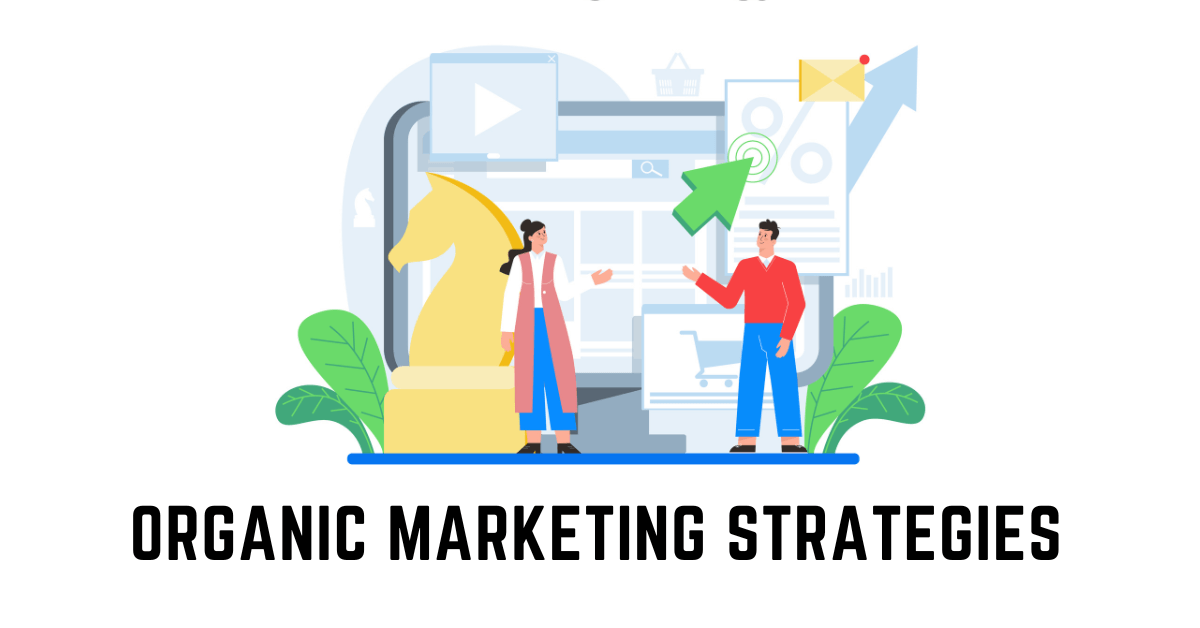
Do you want to grow your business faster?… but you don’t want to spend a lot of money on advertising? The answer is to use spontaneous marketing techniques. If you keep reading, you’ll find out everything I’ve been hiding.
The majority of my accomplishments in business have been accomplished through the utilisation of organic marketing.
I’ll be discussing the seven most effective organic marketing strategies I’ve used.
- SEO
- Partnerships
- Social media
- Content marketing
- CRO
- Email marketing
You’ll have a lot of ideas to put into practice for expanding your business by the time it’s over.
Let’s get started!
My 6 Natural Marketing Strategies
In this part, I’ll explain each of the 6 organic marketing strategies I mentioned and give you an example of each so you can see how they can help your business grow.
1. SEO
SEO is the process of making sure that the pages and blog posts on your website rank well for the keywords that your ideal customer searches for on Google and other search engines.
For example, let’s say you have an online store where you sell clothes for babies. Your baby clothes are made of organic materials, are made to order, come from the US, and are stylish.
Using SEO, you’d want to rank for terms like:
- “Organic baby clothing”
- “Baby clothes made in the US”
- “Fashionable baby clothing”
By spending money on SEO, you can improve your website, pages, and material so that you show up on the first page of search results. This will get people to visit your website, where you can get them to sign up for your email list or buy something.
2. Partnerships
Partnerships are a type of marketing strategy where you team up with other companies in your field. You don’t compete with each other, but you both target the same ideal customer profile (ICP).
For example, one of my companies, Accounts Balance, is a monthly bookkeeping service for agencies, service providers, and SAAS businesses. We have a Partner Program where we work with hundreds of other digital service providers, software, tools, and leaders.
First, we add each other to our Partner pages and trade backlinks. Then, we feature each other in our newsletters to raise brand recognition and generate leads. Finally, we find other ways to send leads both ways every three months.
Relationship building leads to more people knowing about your brand, visiting your website, giving you recommendations, leads, and customers.
3. Social media
Yes, we all know what social media is, but there’s a specific way to use it for free marketing that can bring a lot of interested people to your business. I think you should look at social media as a place where you can become a subject matter expert (SME), build a following, and turn fans into paying customers.
My dream customer uses LinkedIn. I earn their trust by posting every day and showing them the SEO and marketing techniques that are working best for me. Social media is a great place to find your dream customer, but it takes time, consistency, a good plan, and dedication.
4. Content marketing
Content marketing is the practice of making high-quality content that talks directly to your ideal customer and gets them to sign up for your email list so you can keep “talking” to them.
Some examples of content marketing:
- Infographics
- Ebooks
- Checklists
- White papers
- Webinars
- Free trainings
Content marketing helps “pull” your ideal customer into your business so they know you’re a choice when they’re looking for solutions to their problems.
5. CRO
CRO stands for conversion rate optimization. CRO refers to the process of making your website and all of its pages as effective as possible at turning website visitors into email subscribers or paying clients.
Let’s look at a specific case. You figure out the first five organic marketing platforms and start sending thousands of people to your website every month. First of all, good job on that! But does it matter if none of those people sign up for your email list or buy something?
CRO comes in at this point. You look at the style, content, and performance of each page on your website to figure out how to get more visitors to sign up for your newsletter or buy something.
6. Email marketing
Email marketing is the final but most important step. Using email marketing, you may create a list of subscribers that are interested in your company, you, and the goods and services you provide. A newsletter and automated email campaigns are then used to routinely communicate with those folks in order to turn them into paying clients.
Although it’s nice to have people subscribe to your email list or newsletter, it’s useless if you don’t keep in touch with them. You need to engage them in conversation, get to know them better, respond to their inquiries, and establish trust through email marketing.
For instance, one of my businesses, Outsource School, focuses on instructing business owners on how to hire and expand their operations using freelancers and virtual assistants from the Philippines. We publish a weekly email that offers 5,000+ potential clients free outsourcing guidance and tactics. Each week, we gain more of their trust, and eventually many of them join.
Know More: Google Maps marketing
What You Need to Know to Get Started (with Each)
Now that you are familiar with the seven organic Marketing Strategies that you may implement to expedite the growth of your company, let’s discuss some straightforward and practical activities that you can do to kick off the implementation of these tactics.
1. SEO
Thoughts to get the ball rolling:
- Create a page for a blog on your website.
- Make it a point to write and post a new blog entry once every week.
- Focus on one specific term with each blog.
- You want to make sure that your keywords reflect what your ideal customer would look for to find you.
- Ensure that all of your material is of a high quality and provides value to your customers.
2. Partnerships
Some ways to start:
- Open a new Trello board or Google Sheet.
- Partner up with 100. Your 100 best possible friends.
- Find out how to get in touch with all 100. (Or hire a virtual assistant to do it)
- Use social media and email to get in touch with them.
- Try to get to know them and get along with them.
- Content trades should be run together.
3. Social media
Some ways to start:
- Pick one station to begin with.
- Use Twitter or LinkedIn to find business-to-business clients.
- Instagram, TikTok, or Facebook for B2C users.
- Post once a day
- Answer the comments people make.
- Make a personal name out of your skills.
4. Content marketing
Some ways to start:
- Think of five things that your dream customer would want.
- Make the 5 lead magnets over a period of 6 to 12 months.
- Show them off on your site.
- Share about them on your social media.
- Have your partners share them with you.
5. CRO
Tips for getting started:
- Set up tracking with Google Analytics once people are visiting your website.
- Find out how many of your visitors sign up for your email list.
- Once you know where you are starting from, make a list of ways you could improve.
- Use them, and do this again every quarter.
6. Email marketing
Tips for getting started:
- You can use Mailchimp, ActiveCampaign, Constant Contact, or other email marketing tools.
- Start sending out a weekly email. The same day and time every week.
- Create a content plan and stay ahead of the game.
- Schedule newsletters and ask your followers for feedback.
Do Something About It
Organic marketing is a valid and proven way to bring possible customers to your website, who you can then work to turn into paying customers. For the past 10 years, I’ve used Organic Marketing Strategies to grow my businesses, and I’m still a big fan of them today.
Your business can grow without a big marketing budget. All you need are tested methods, discipline, and the motivation to keep going for months. Sit down and figure out how you will start these for your business. Take one at a time, make sure you have a good plan for it, delegate it, and then add another.
In one to two years, you’ll have a fully-functioning organic marketing machine that brings thousands of leads to your business every month.




